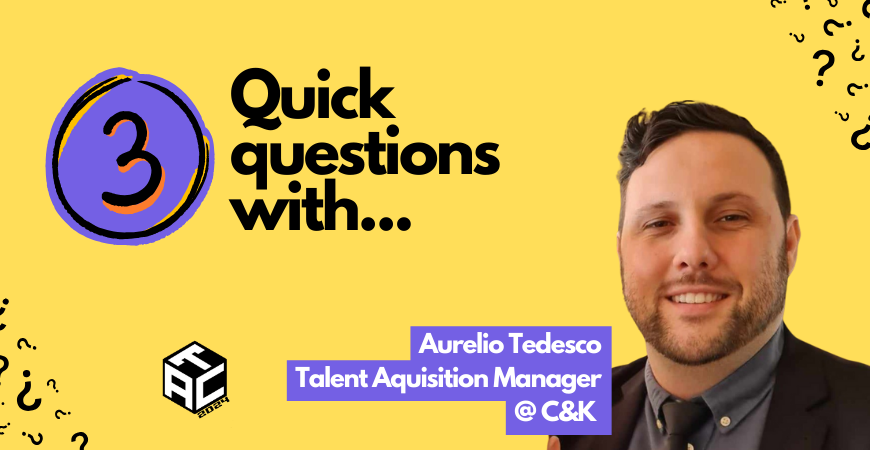Let us provide a little clarity amid all this uncertainty. Because despite the complexity we are all facing today, we are still able to uncover insights that lead to huge opportunities for our organisations.
To achieve this, there are three things Talent Leaders need to focus on right now – understanding, positioning and learning. It is a time where we really need to consider our changing environment and adapt to it. By focusing on these three areas, we can truly position ourselves as our organisations’ strategic partner.
1. Understand: what’s really happening
As any strategist will tell you, we first need to focus on where we are before we contemplate where we need to be. Let us understand the current market and how our company is faring.
At LinkedIn, we are constantly assessing global hiring and it is fair to say, it is still in major flux. While we are seeing hiring begin to stabilise around the world, millions of people continue to lose their jobs. It may be years before we get back to the strength in hiring levels that we saw at the start of this year. We need to acknowledge this reality and act on it.
Are you hiring, stabilising or restructuring? You really need to centre on where you are at as a company and where you ultimately need to get to. That is easier said than done in this uncertain environment. Essentially, we are all being asked to forge a new path with limited information.
So, how can you leverage insights to understand the current market and how your company is shaping up? It all depends on where you are on the journey:
I’m Hiring:
If things are on the up – and for some sectors they certainly are – you need to act decisively.
First, you need to identify new sources of Talent to meet hiring needs. How familiar are you – or your team – with the hiring landscape for new roles your company now needs? Understand who you are competing against for Talent as you develop your strategy. We have moved a long way from asking ourselves ‘is there the right Talent in our physical location?’
By using smarter ways to find Talent, you can identify new sources to meet your firm’s needs. By leveraging insights that lie in hiring data, you will find yourself quickly become familiar with the hiring environment for new roles your company now requires.
Professional services firm Genpact is hiring senior engineering and product teams. The Talent Acquisition and marketing departments rely on LinkedIn Talent Insights to understand the Talent supply in specific regions and create personalised marketing campaigns to attract and hire Talent faster. The Talent Acquisition team harnessed the insights on Talent availability to set the right hiring expectations with delivery managers and sales leaders. The marketing team then used employee value proposition insights from LinkedIn Talent Insights to personalise Talent marketing campaigns. Using data to find the desired Talent pools, Genpact was able to shortlist 21 candidates in less than four weeks.
I’m Stabilising:
Even if you aren’t hiring right now, you need to prepare for when you are. You can harness the insights on LinkedIn to understand who is hiring and where people are choosing to leave.
With remote work on the rise, you can leverage the supply and demand data to identify opportunities where there are Talent pools that are set up for remote work.
It is also a really good idea to use this time to raise the capability of your Talent Acquisition team. Are you able to build their skills on data-driven insights and storytelling? Doing so will keep the business and your hiring managers informed.
Right now, people are drowning in information and thirsting for insight. You and your team can provide the clarity the business requires.
I’m Restructuring:
If you are in the difficult process of restructuring, then you can leverage the insights available on LinkedIn to look at skill adjacencies across your sector and identify the skills you need and benchmark against your competitors.
Presently, hiring freezes mean companies are often having to build rather than buy as they need to move Talent internally rather than bring new people in. Insights that are available on LinkedIn can inform these decisions.
2. Positioning: strategic partner
Once you understand where your business is and where it is heading, you are able to think about the approach that truly positions you – and your team – as strategic partners in your organisation.
You need to start by asking how you can best deploy your workforce. However you choose to align your people, there will inevitably be gaps. And this is where the questions lie. Are you able to build a healthy hiring pipeline to fill these gaps? What are your competitors doing? If it is something different, are you investing in the right skills for now and the future? Is there a way of bridging the gap through a focus on learning?
As a strategic partner to your organisation, you need to keep ahead of the trends that are emerging in this new normal. For example, we have recently seen thousands of companies adding the phrase ‘work remotely’ to their job postings. With many office buildings closed globally, being able to get work done at home is suddenly a competitive advantage. Data compiled by our Economic Graph team shows remote work’s share of job listings increased by almost a third from March.
And this works both ways. Job seekers are just as interested in jumping onto Zoom rather than the bus. LinkedIn data is showing a 42 percent leap in the March volume of job searches involving the keywords ‘remote’ or ‘work at home’. This rise in remote-work listings could be the start of a much more enduring trend, as companies rethink their traditional dividing lines between on-site and remote work.
3. Learning along the way
In amongst all of these changes, it is important to continue to plan strategically for the future. Can you bridge the gaps that are emerging through learning? Employees are proactively seeking ways to boost productivity.
Learners watched over 7.7 million hours of LinkedIn Learning content in April. That’s three times the amount they were consuming a couple of months earlier. Skills are key and our employees know this too. People are using this time to upskill.
As Talent Leaders, we should always be asking ourselves questions. Are we investing in the right skills for now and the future? Whether you are hiring stabilising or restructuring, you can leverage LinkedIn to make sure that you track engagement with your brand and get an understanding of where you should focus your employee experience efforts.
So, keep those three areas in mind – understanding, positioning and learning. By understanding where we are as an organisation – and where we need to be, positioning ourselves as strategic partners for our organisation and focusing on learning opportunities for our people, we can navigate our way out of today’s uncertainty.
This article is contributed by LinkedIn Talent Solutions.
Contact Julian Nicholls for a LinkedIn Talent Insights demonstration and find out how you can uncover tomorrow’s opportunity.




























